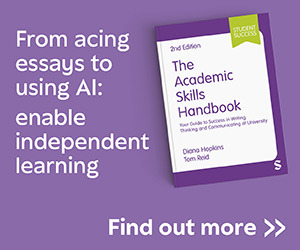How to Think
Your Essential Guide to Clear, Critical Thought
- Tom Chatfield - Author, tech philosopher and broadcaster
This is a book about thinking. Engaging and down-to-earth, it captures the habits and practices that are fundamental to clear thinking and effective study.
In his warm and friendly style, Tom Chatfield shows you how to:
- Identify and examine your biases
- Engage in lively, curious skepticism
- See the value in emotion and use rhetoric persuasively
- Know when to say 'I don't know'
- Construct reasoned arguments and explanations
- Think critically about how you engage with technology.
Short and punchy, the book views critical thinking as a skill to be continually practiced and developed. It equips you with a toolkit for clearer thinking, describing ten key concepts that help you to apply what you have learned. Including regular reflective exercises, key concepts, further readings, each chapter also offers recommendations for how to put the ideas it discusses into practice.
This book is for undergraduate students and anyone looking to understand the core ideas behind critical thinking. Celebrating both self-reflection and collaboration, this book empowers you to pause, think twice and, above all, think well.
Supplements
Watch the recording of How to Think for Yourself with Tom Chatfield and Alex Baratta. This webinar, hosted by JS Group, offers top tips on how to spot misinformation and engage critically with the world.
Visit our hub for free academic skills, wellbeing and employability resources from our new and bestselling guides, designed to support you from day one all the way through to graduation and beyond.
Inspiring, practical and engaging, this book raises, explores and addresses some of the fundamental questions and issues we face when making sense of and responding to the world around us. Using accessible language and relatable examples, it offers us practical tools to develop critical thinking skills, not just for academic study but also for life.
This book could be transformative for senior leaders, teachers and their pupils.
How To Think is not just a book that explains effective cognitive processes; it actually models these processes and trains you in them. It would make an excellent tool to inform planning, how to formulate proper arguments and explain ideas.
Chatfield's writing style is an easy going one, using everyday examples a reader can identify with, and thus, understand what an argument is and how an argument is build - the reflective exercises in the book help. Critical thinking and argument building is particularly important for many international students, this down to earth approach makes it more accessible for them.
This is the first book of Tom Chatfield that I’ve read, and it was fantastic. It breaks down a ton of common thinking errors, and he touches on relevant topics to use as examples. Each chapter has reflections as well to go back over what was discussed, and it’s great to take some time during the reflections to see how you can apply the tools to daily life. For anyone who wants to improve their thinking and decision-making, I highly recommend this book, and I’ll most likely be reading it again at some point.
I have read other texts related to critical thinking and I feel this one gives a clearer insight into this process because it does not just say ‘this is critical thinking’ but instead takes me slowly through the mechanics of becoming a critical being. The toolkit is also a brilliant summary of the key points from the book.
A masterclass in clear critical thinking.
A useful guide to support time management and support critical thinking skills
An excellent text to support our higher education students and not just the level 4 studies but for students to develop key skills throughout the Foundation Degree and top-up Degree programmes. Clear reflection boxes to consider the topics explored, in addition to a summary and recommendations at the end of each chapter, enabling students to extend on learning opportunities.
Useful for learners to dip in and out of whilst developing their skills









